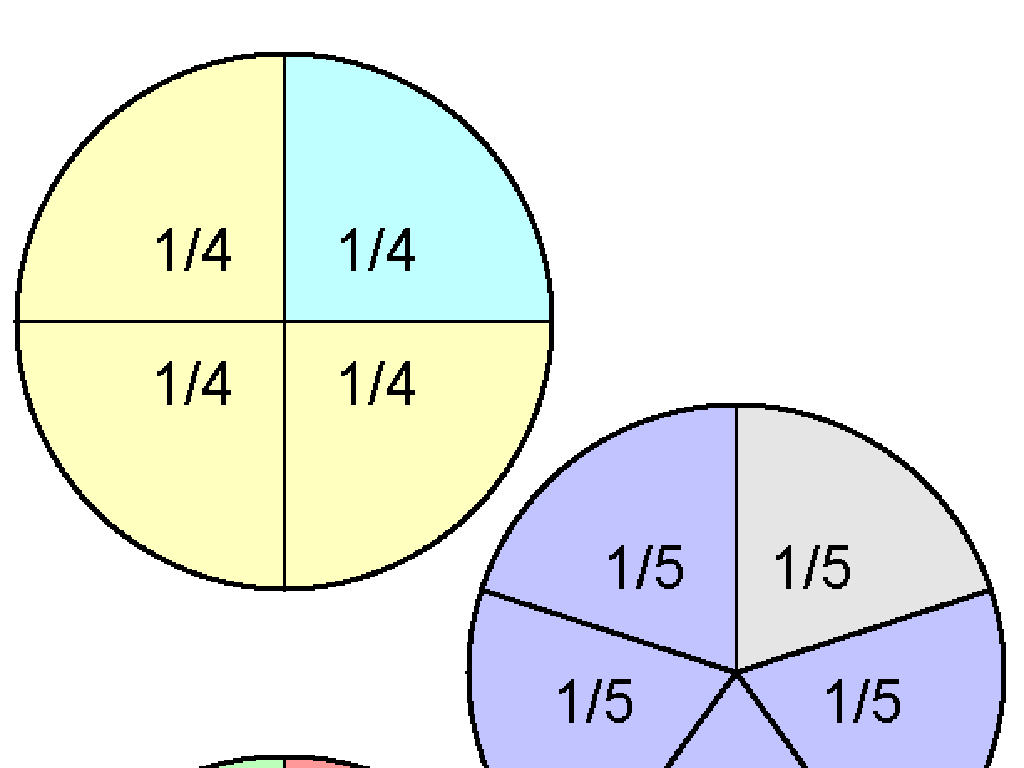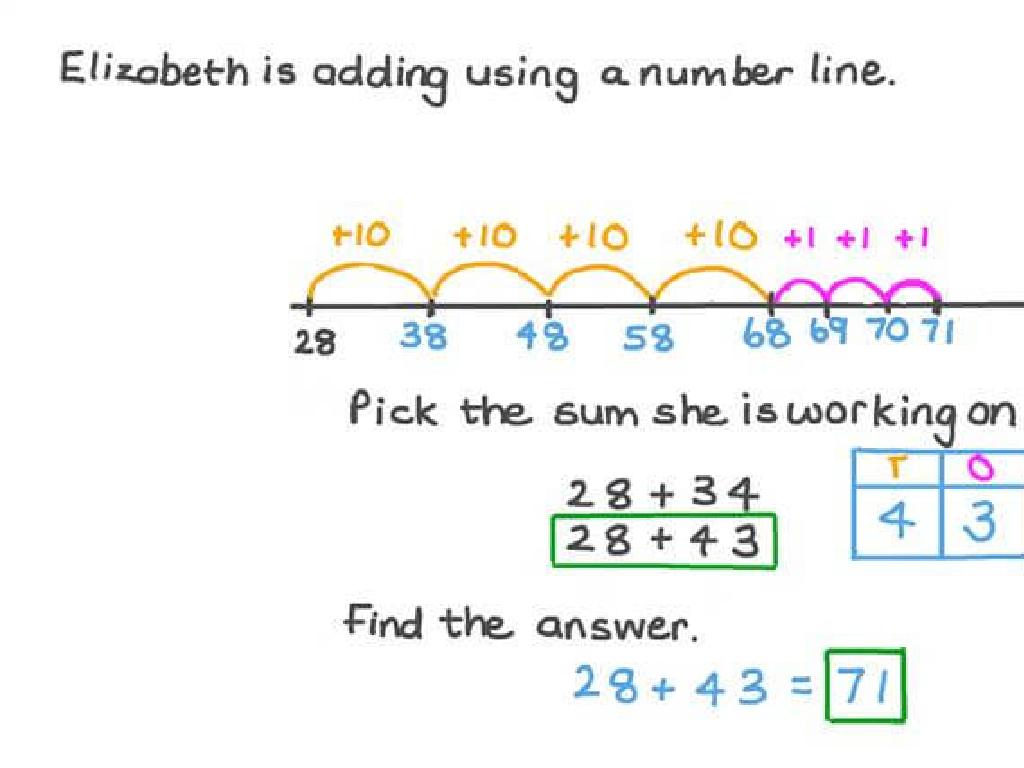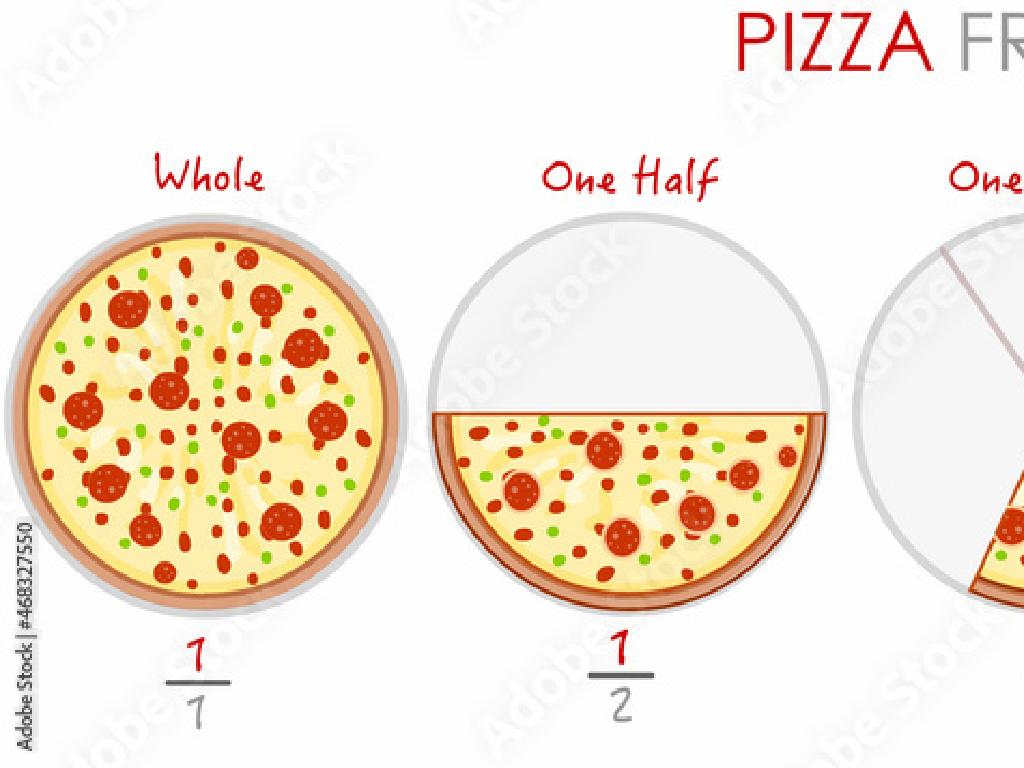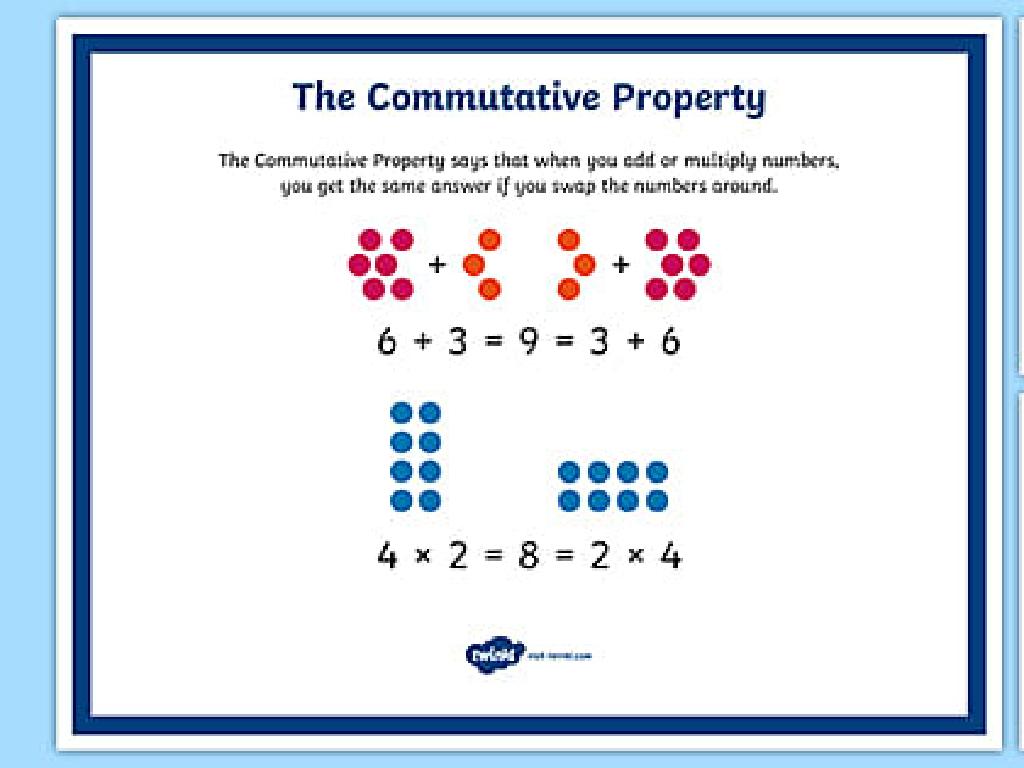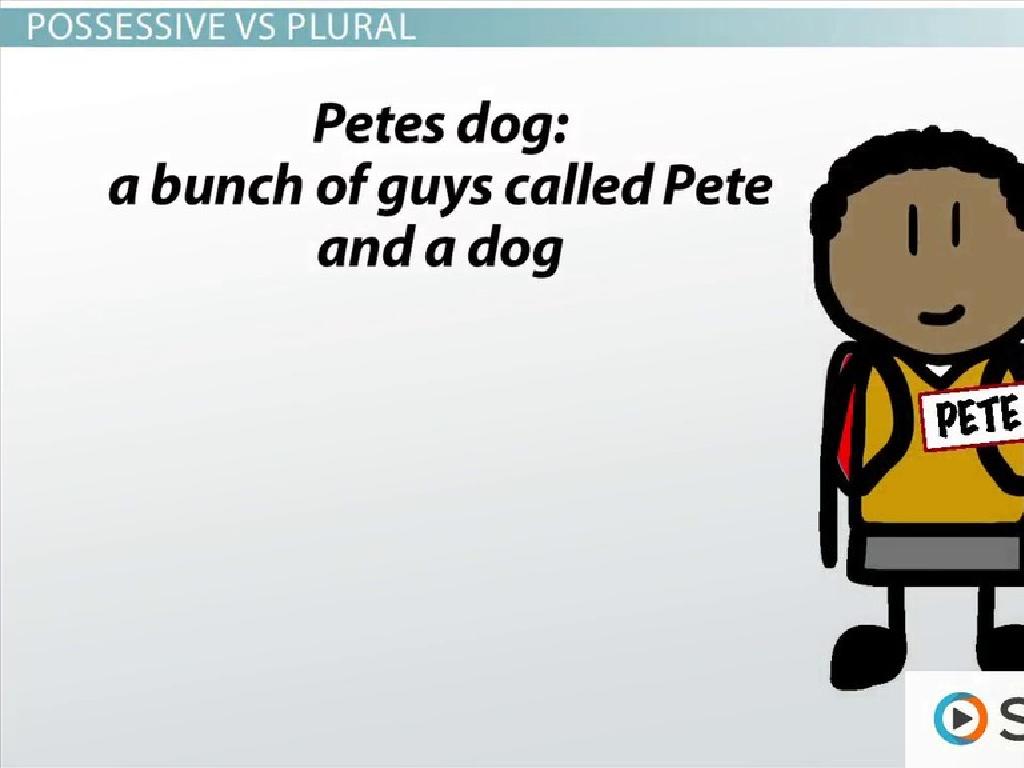Distinguish Facts From Opinions
Subject: Language arts
Grade: Seventh grade
Topic: Persuasive And Opinion Writing
Please LOG IN to download the presentation. Access is available to registered users only.
View More Content
Distinguishing Facts from Opinions
– What is Persuasive Writing?
– Persuasive writing aims to convince readers to accept a viewpoint.
– Facts vs. Opinions
– Facts are verifiable truths; opinions are personal beliefs.
– Significance of the distinction
– Knowing the difference strengthens arguments.
– Analyzing examples
– We’ll review examples to practice identifying each.
|
This slide introduces students to the concept of persuasive writing with a focus on distinguishing facts from opinions. Start by explaining that persuasive writing is used to influence the reader’s thoughts or actions. Emphasize the importance of differentiating between facts, which are objective and can be proven, and opinions, which are subjective and based on personal feelings. Understanding this distinction is crucial for constructing strong, credible arguments. Engage the class by analyzing examples of each and discussing why recognizing the difference is essential in persuasive writing. Encourage students to think critically about the information they encounter and to practice this skill in their writing.
Understanding Facts in Writing
– Define a fact
– A fact is a statement that can be proven true or false.
– Characteristics of facts
– Facts are objective, verifiable, and unaffected by emotions.
– Examples of facts
– ‘The Earth orbits the Sun’ – a verifiable scientific fact.
– Fact vs. opinion in writing
– Facts are indisputable truths, while opinions are personal beliefs.
|
This slide aims to clarify the concept of a fact for students, distinguishing it from opinions, which will be covered in subsequent slides. Start by defining a fact as a statement that can be proven true or false with evidence. Discuss the characteristics of facts, emphasizing their objectivity and verifiability. Provide clear examples of facts, preferably from various fields such as science, history, and mathematics, to show how facts function in different contexts. Finally, introduce the distinction between facts and opinions, setting the stage for deeper exploration into persuasive and opinion writing. Encourage students to think critically about the information they encounter and assess whether it is factual or opinion-based.
Understanding Opinions in Writing
– Define an opinion
– A personal belief or judgment, not necessarily based on fact or knowledge.
– Traits of opinions
– Opinions are subjective, biased, and based on feelings.
– Opinion versus fact
– Opinions can be argued, unlike facts which are indisputable.
– Examples in literature
– ‘The best book ever’ shows the author’s personal preference.
|
This slide aims to help students distinguish between facts and opinions, a crucial skill in persuasive and opinion writing. Start by defining an opinion as a statement that reflects personal beliefs, feelings, or judgments, which can vary from person to person. Emphasize that opinions are subjective and can be influenced by individual experiences or emotions. Contrast opinions with facts, which are objective and verifiable. Provide examples from literature or everyday scenarios where opinions are evident, such as book reviews or editorials. Encourage students to think critically about the statements they read and write, assessing whether they are presenting facts or personal viewpoints.
Comparing Facts and Opinions
– Fact vs. Opinion: What’s the difference?
– Fact: can be proven. Opinion: personal belief or judgment.
– Strategies to distinguish them
– Look for evidence, check if it’s verifiable or subjective.
– Activity: Fact or Opinion?
– Read sentences, decide if each is a fact or an opinion.
– Discuss your findings
|
This slide aims to clarify the difference between facts and opinions, which is crucial for persuasive and opinion writing. A fact is a statement that can be proven true or false, while an opinion is an expression of personal belief or judgment. To help students distinguish between the two, teach them to look for evidence supporting the statement and to assess whether the statement is verifiable or based on personal feelings. The class activity involves reading sentences and categorizing them as facts or opinions, which will reinforce their understanding. Encourage students to explain their reasoning during the discussion, fostering critical thinking and debate skills.
The Value of Separating Facts and Opinions
– Importance in persuasive writing
– Persuasive writing sways readers using logical reasoning and evidence.
– Facts build credibility
– Using verified information enhances the writer’s trustworthiness.
– Opinions express viewpoints
– Personal beliefs or feelings shape one’s perspective on topics.
– Balancing facts and opinions
– Effective arguments use a mix of factual evidence and personal insight.
|
Understanding the difference between facts and opinions is crucial for students as they engage in persuasive writing. Facts are objective, verifiable pieces of information that lend credibility to an argument, while opinions are subjective statements that reflect personal beliefs or feelings. Teaching students to effectively use both can help them construct compelling and balanced arguments. They should learn to support their opinions with factual evidence, which will make their writing more convincing. During the lesson, provide examples of both facts and opinions and discuss how they can be used together to strengthen a persuasive essay.
Class Activity: Fact or Opinion?
– Play: Fact or Opinion?
– Analyze given statements
– Look for objective evidence or subjective language
– Decide: Fact or Opinion
– Use critical thinking to categorize
– Discuss with a partner
– Share thoughts and reasoning
|
This interactive class activity is designed to help students understand the difference between facts and opinions. Provide a list of mixed statements to the students and ask them to determine whether each statement is a fact, which can be proven or verified, or an opinion, which is based on personal beliefs or feelings. Encourage students to discuss their reasoning with a partner to foster communication skills and critical thinking. As a teacher, facilitate the discussion by asking probing questions and guiding students towards understanding the nuances of language that indicate factual information versus personal perspective. Possible activities for different students could include creating their own fact or opinion statements, finding examples in articles, or even role-playing scenarios where they have to defend their categorization.
Class Activity: Facts vs. Opinions
– Write a paragraph on any topic
– Include 3 facts and 3 opinions
– Understand the difference
– Facts are verifiable truths; opinions are personal beliefs
– Share with the class
|
This activity is designed to help students practice distinguishing between factual statements and opinions within their writing. Encourage them to choose a topic they are passionate about to make the exercise more engaging. Facts in their paragraphs should be statements that can be proven true, while opinions should reflect their personal feelings or beliefs. After writing, students will share their paragraphs in class, which will provide an opportunity for discussion about the differences between facts and opinions and how they can coexist in persuasive writing. This will also enhance their critical thinking and analytical skills.
Wrapping Up: Facts vs. Opinions
– Recap the facts vs. opinions
– Importance in persuasive writing
– Understanding this helps present arguments convincingly
– Homework: Analyze a news article
– Identify and list examples of facts and opinions
– Be ready to discuss your findings
– Share your insights in the next class
|
As we conclude today’s lesson, remember that distinguishing between facts and opinions is crucial for constructing effective arguments in persuasive writing. Facts are statements that can be proven true, while opinions are personal beliefs or judgments. For homework, students are to find a news article and identify examples of both facts and opinions within it. This exercise will help them practice discerning between the two and understand how they can be used to influence readers. Encourage students to be prepared to discuss their findings in the next class, fostering a deeper understanding and application of today’s lesson.

